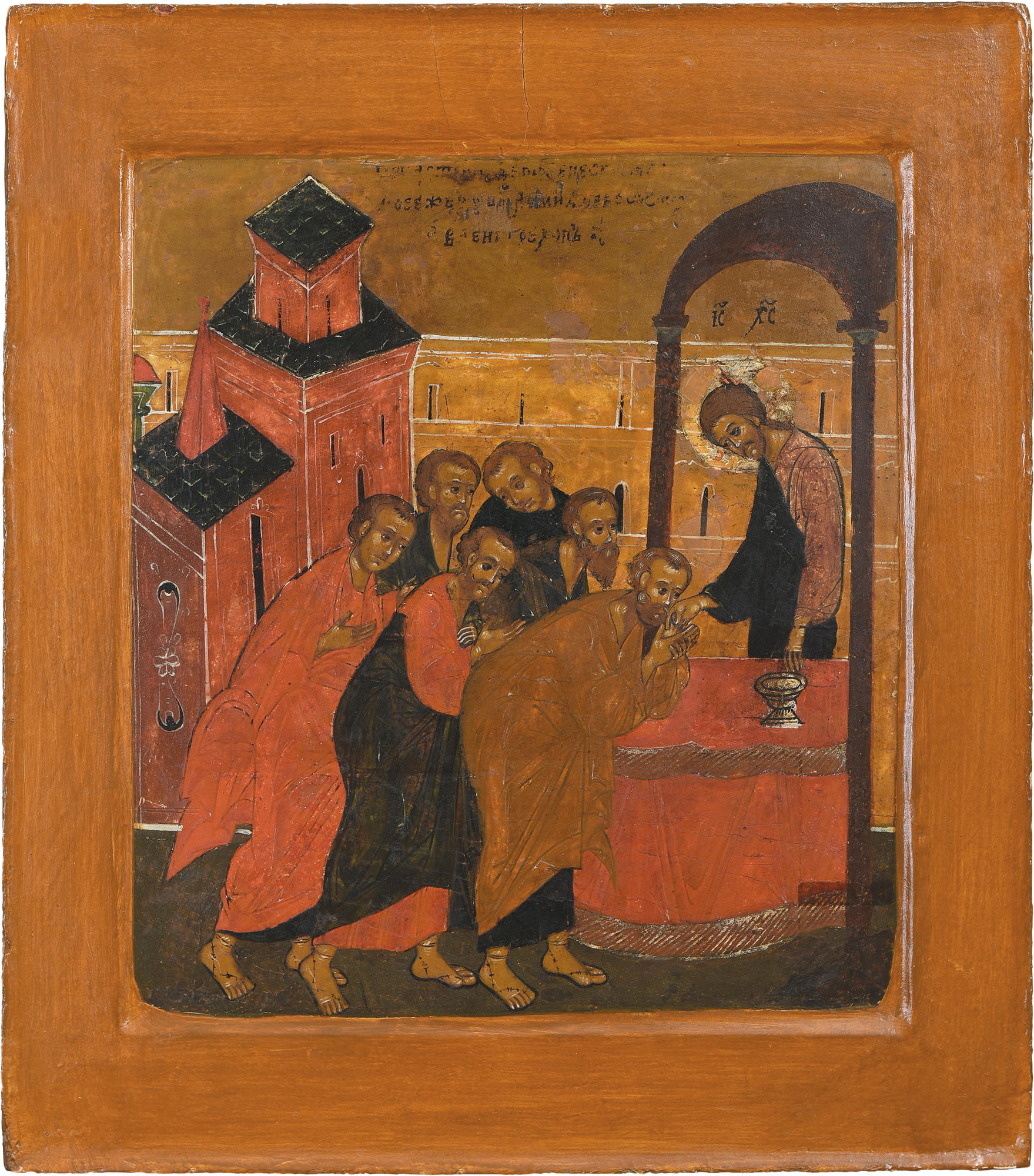Eucharist is translated from Greek as ‘thanksgiving’ or ‘gratefulness’ and symbolizes Holy Sacrament, the rite of sanctifying bread and wine and their subsequent consumption. In that way, Christians take communion or partake in the Body and Blood of Christ. Orthodox believers usually take communion following the baptism ceremony, or by various traditions, on the eighth or fortieth day after birth.
Eucharist under the Species of Bread
Время создания
First half of the 17th century, Central Russia
Размер
40x36 cm
40х36х2.5 cm
40х36х2.5 cm
Техника
Wood, tempera, no visible traces of pavoloka. The icon is inserted in a new solid board (19th century), has two counter wood strips.
Выставка
1
Открыть в приложении#3
Unknown Author
Eucharist under the Species of Bread
#2
#5
The legend says that the communion was instituted during the Last Supper, the last meal Christ had with his twenty closest disciples. The iconographic tradition allows for separate depiction of the Eucharist two parts: the offer of bread and the offer of wine. This icon made in the first half of the 17th century by a master from Central Russia shows the left side of the Eucharist – Christ is offering bread to the Apostles.
Christ is shown on the icon’s right side standing behind the holy table under the canopy (ciborium or simply shelter) and giving out bread to Apostle Paul with his right hand. The Apostle is bending in a deep bow with five other Disciples of Christ standing behind him. The iconographer’s main composition motif is represented by positioning the Apostles in a circle accentuated by a three-dimensional representation of an architectural piece: the communion ritual is performed against the background of a wall with dark narrow openings and a tower-like chamber under a single-pitched roof.
Christ is shown on the icon’s right side standing behind the holy table under the canopy (ciborium or simply shelter) and giving out bread to Apostle Paul with his right hand. The Apostle is bending in a deep bow with five other Disciples of Christ standing behind him. The iconographer’s main composition motif is represented by positioning the Apostles in a circle accentuated by a three-dimensional representation of an architectural piece: the communion ritual is performed against the background of a wall with dark narrow openings and a tower-like chamber under a single-pitched roof.
#6
Images referring to the Last Supper appeared already in the early Christian art. For instance, a drawing found in the San Callisto Catacombs in Rome dates back to the third century. It shows a bread basket and fish referring both to Christ’s celebrated miracles and the last meal with his disciples. Paintings of the Eucharist itself appear as early as the 6th century. For instance, the scene was depicted on the walls of a liturgical vessel (discos) coming from the Syrian Rikhia.
Here, Jesus is placed in an area resembling the altar space. He is shown twice surrounded by two groups of Apostles.
#7
Holy Communion under species of bread, Andrei Rublev’s workshop. Source: wikipedia.org
For instance, the Apostles taking communion are shown in the mosaic dating to 1113 which decorated St. Michael’s Golden-Domed Monastery in Kiev. Now it is on display in the museum of St. Sophia Golden-Dome Cathedral. In 1425 to 1427, two Eucharistic icons were painted in Andrei Rublev’s workshop: Holy Communion under species of wine and Holy Communion under species of Bread. Both icons are presently in the Trinity Cathedral of the Holy Trinity Monastery in Sergiyev Posad.
#8
Orenburg Regional Museum of Fine Arts
читать дальшескрыть
00:00
00:00
1x
Eucharist under the Species of Bread
Время создания
First half of the 17th century, Central Russia
Размер
40x36 cm
40х36х2.5 cm
40х36х2.5 cm
Техника
Wood, tempera, no visible traces of pavoloka. The icon is inserted in a new solid board (19th century), has two counter wood strips.
Выставка
1
Открыть в приложении
Поделиться




